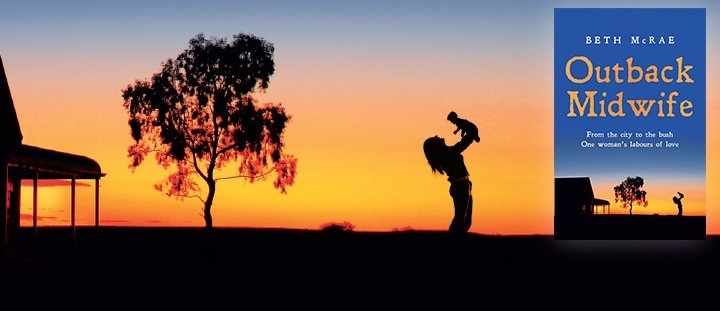This month saw the launch of memoir Outback Midwife in Australia – one of my most challenging and interesting ghosting projects to date.
The author Beth McRae and myself worked very hard for two years, mostly via Skype, to write the story of her amazing 40-year career as a midwife. So far the book has sold well in Australia and I am proud that Beth’s incredible stories of life as a remote area midwife in a rural Aboriginal community have been well received by readers.
Beth’s journey into the unknown really began in 2010 when she became one of the first designated remote area midwives for the Northern Territory Government, setting up a new life in the indigenous town of Maningrida. She immediately found something very humble and no-fuss about the Aboriginal mothers who just quietly got on with having babies – or ‘women’s business’ as they called it.
Living and working in The Outback hasn’t been easy. Arriving in a community so remote that visitors need a permit to visit, Beth had to overcome reluctance and suspicion from her new patients who had seen many a do-gooder arrive in town with naïve fresh-faced enthusiasm only to quickly depart when they couldn’t hack it.
At her first antenatal clinic a handful of women turned up and then went ‘walkabout’ when they got bored of waiting. Beth soon learnt that the best tactic was to drive around town collecting the women up in her jeep so she could transport them back to the clinic.
The women often seemed bemused by the fuss over their pre-pregnancy care – and who could blame them? With a culture steeped in tradition their female ancestors had given birth ‘on country’ quietly carrying out women’s business with guidance passed down from mother to daughter. Childbirth to them had always been natural with no need for fuss – that came later with important and ancient ceremonies to welcome the newest member of the community into the world.
But statistically babies born to Aboriginal mothers are twice as likely to be born prematurely and with nothing but basic medical facilities in remote communities it is arguably much safer for women to give birth in properly equipped hospitals.
Standard procedure in NT is that all remote Aboriginal mothers should be flown from their isolated communities to the city at 36 weeks pregnant so that they can be near a hospital when the time comes to give birth. This is all well and good but it also means expectant mothers having to endure those last few weeks of pregnancy while living in an unfamiliar hostel before giving birth hundreds of miles away from their families and children. Yet in Beth’s experience the women rarely refused to go. Instead as she toured the town coaxing them into antenatal care the majority took it graciously, respectfully and often with gratitude.
Indeed as months have turned into years in Maningrida, Beth has not only gained the trust of the community but has often been invited to share wonderful intimate moments of Aboriginal culture. She has loved every minute thinking on her feet, forging bonds with her mothers and having her eyes opened to the fascinating traditions of the Aboriginal people.
As she nears retirement her book details memories to last a lifetime and she feel privileged and proud to have made a difference.

